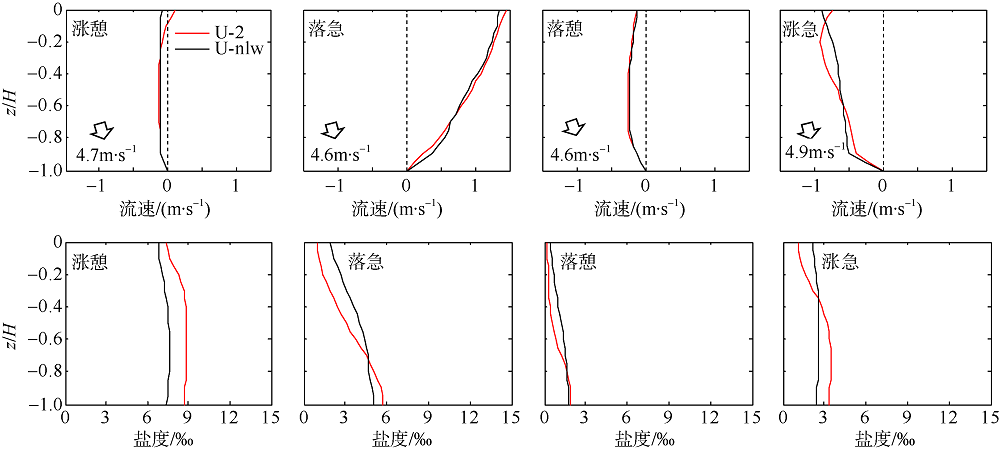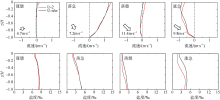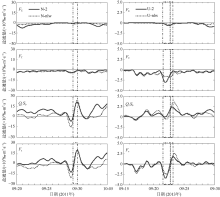| [1] |
吕爱琴, 杜文印 , 2006. 磨刀门水道咸潮上溯成因分析[J]. 广东水利水电, ( 5):50-53.
|
|
LV AIQIN, DU WENYIN , 2006. Salty tide tracing back reason in Modaomen waterway[J]. Guangdong Water Resources and Hydropower, ( 5):50-53 (in Chinese).
|
| [2] |
叶荣辉, 钱燕, 孔俊 , 等, 2013. 珠江三角洲大系统风暴潮数学模型建立与验证[J]. 人民长江, 44(21):76-80.
|
|
YE RONGHUI, QIAN YAN, KONG JUN , et al, 2013. Mathematical model establishment and verification for large scale storm surge in Pearl River Delta[J]. Yangtze River, 44(21):76-80. (in Chinese with English abstract).
|
| [3] |
CHEN SHUISEN, FANG LIGANG, ZHANG LIXIN , et al, 2009. Remote sensing of turbidity in seawater intrusion reaches of Pearl River Estuary - a case study in Modaomen water way, China[J]. Estuarine, Coastal and Shelf Science, 82(1):119-127.
doi: 10.1016/j.ecss.2009.01.003
|
| [4] |
CHO K H, WANG H V, SHEN JIAN , et al, 2012. A modeling study on the response of Chesapeake Bay to hurricane events of Floyd and Isabel[J]. Ocean Modelling, 49-50:22-46.
doi: 10.1016/j.ocemod.2012.02.005
|
| [5] |
FLATO G, MAROTZKE J, ABIODUN B , et al, 2013. Evaluation of Climate Models[C]// Climate change 2013: the physical science basis. Contribution of working group I to the fifth assessment report of the intergovernmental panel on climate change. Cambridge: Cambridge University Press: 741-866.
|
| [6] |
FUJII T, MAEDA J, ISHIDA N , et al, 2002. An analysis of a pressure pattern in severe Typhoon Bart hitting the Japanese Islands in 1999 and a comparison of the gradient wind with the observed surface wind[J]. Journal of Wind Engineering and Industrial Aerodynamics, 90(12-15):1555-1568.
doi: 10.1016/S0167-6105(02)00270-2
|
| [7] |
GONG WENPING, SHEN JIAN , 2011. The response of salt intrusion to changes in river discharge and tidal mixing during the dry season in the Modaomen Estuary, China[J]. Continental Shelf Research, 31(7-8):769-788.
doi: 10.1016/j.csr.2011.01.011
|
| [8] |
GONG WENPING, MAA J P-Y, HONG BO , et al, 2014. Salt transport during a dry season in the Modaomen Estuary, Pearl River Delta, China[J]. Ocean & Coastal Management, 100:139-150.
|
| [9] |
HANSEN D V, RATTRAY M JR , 1966. New dimensions in estuary classification[J]. Limnology and Oceanography, 11(3):319-326.
doi: 10.4319/lo.1966.11.3.0319
|
| [10] |
HERBECK L S, UNGER D, KRUMME U , et al, 2011. Typhoon-induced precipitation impact on nutrient and suspended matter dynamics of a tropical estuary affected by human activities in Hainan, China[J]. Estuarine, Coastal and Shelf Science, 93(4):375-388.
doi: 10.1016/j.ecss.2011.05.004
|
| [11] |
KUO A, PARK K , 1992. Transport of hypoxic waters: an estuary-subestuary exchange[M] //PRANDLE D. Dynamics and exchanges in estuaries and the coastal zone. Washington: American Geophysical Union: 599-615.
|
| [12] |
LERCZAK J A, GEYER W R, CHANT R J , 2006. Mechanisms driving the time-dependent salt flux in a partially stratified estuary[J]. Journal of Physical Oceanography, 36(12):2296-2311.
doi: 10.1175/JPO2959.1
|
| [13] |
LI CHUNYAN, WEEKS E, REGO J L , 2009. In situ measurements of saltwater flux through tidal passes of Lake Pontchartrain estuary by Hurricanes Gustav and Ike in September 2008[J]. Geophysical Research Letters, 36(19):L19609.
doi: 10.1029/2009GL039802
|
| [14] |
LI MING, ZHONG LIEJUN, BOICOURT W C , et al, 2006. Hurricane-induced storm surges, currents and destratification in a semi-enclosed bay[J]. Geophysical Research Letters, 33(2):L02604.
|
| [15] |
PURKIANI K, BECHERER J, KLINGBEIL K , et al, 2016. Wind induced variability of estuarine circulation in a tidally energetic inlet with curvature[J]. Journal of Geophysical Research: Oceans, 121(5):3261-3277.
doi: 10.1002/2015JC010945
|
| [16] |
SCULLY M E, FRIEDRICHS C, BRUBAKER J , 2005. Control of estuarine stratification and mixing by wind-induced straining of the estuarine density field[J]. Estuaries, 28(3):321-326.
doi: 10.1007/BF02693915
|
| [17] |
YANG T-N, LEE T-Q, MEYERS P A , et al, 2011. The effect of typhoon induced rainfall on settling fluxes of particles and organic carbon in Yuanyang Lake, subtropical Taiwan[J]. Journal of Asian Earth Sciences, 40(6):1171-1179.
doi: 10.1016/j.jseaes.2010.07.016
|
| [18] |
YUAN RUI, ZHU JIANRONG, WANG BIAO , 2015. Impact of sea-level rise on saltwater intrusion in the Pearl River estuary[J]. Journal of Coastal Research, 31(2):477-487.
doi: 10.2112/jcoastres-d-13-00063.1
|
| [19] |
ZHANG Y J, YE FEI, STANEV E V , et al, 2016. Seamless cross-scale modeling with SCHISM[J]. Ocean Modelling, 102:64-81.
doi: 10.1016/j.ocemod.2016.05.002
|
 ),杨芳3,罗照阳1,章卫胜1,荆立1,4,王青1,李占臣5
),杨芳3,罗照阳1,章卫胜1,荆立1,4,王青1,李占臣5
 ),Fang YANG3,Zhaoyang LUO1,Weisheng ZHANG1,Li JING1,4,Qing WANG1,Zhanchen LI5
),Fang YANG3,Zhaoyang LUO1,Weisheng ZHANG1,Li JING1,4,Qing WANG1,Zhanchen LI5









































